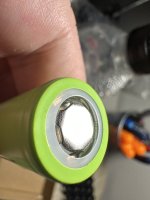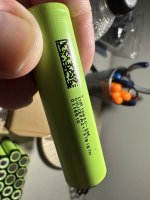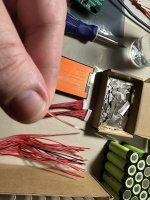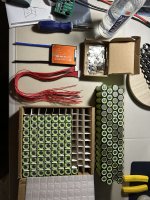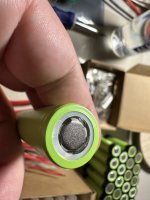dis360
1 µW
I have a scooter that came with a 10s3p 6Ah (2 rows of 15 cells) battery pack 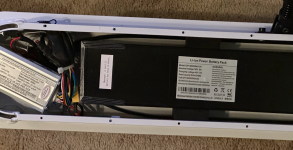 , I am building an upgraded 10s6p 18Ah (4 rows of 15 cells) battery pack. Due to the cells being 4 rows of 15 (desired outer pack dimensions) a simple welding configuration like 6 rows of 10 can't be used.
, I am building an upgraded 10s6p 18Ah (4 rows of 15 cells) battery pack. Due to the cells being 4 rows of 15 (desired outer pack dimensions) a simple welding configuration like 6 rows of 10 can't be used.
My ultimate request is for help to determine/confirm the proper welding/tab configuration to get a 10s6p 36v battery pack.
The closest I've come to finding an example of a 10s6p (4 rows of 15 cells) battery pack is in the Segway Ninebox G30 Max. I grabbed a couple of screenshots from others attempting to resolve battery issues and noted their welding/tab configuration.
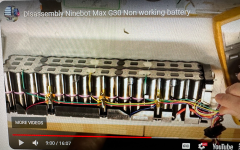
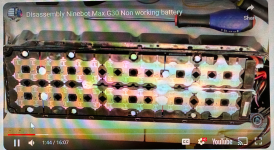
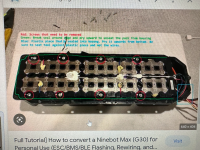
Other 10s6p 36v packs

I have replicated the above battery configuration and proposed the following tab configuration. This picture is the pack I'm assembling and it's facing the camera on side 2 in my diagram below.
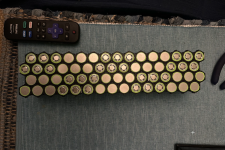
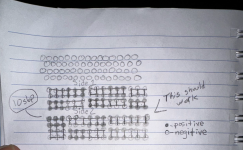
Thanks
 , I am building an upgraded 10s6p 18Ah (4 rows of 15 cells) battery pack. Due to the cells being 4 rows of 15 (desired outer pack dimensions) a simple welding configuration like 6 rows of 10 can't be used.
, I am building an upgraded 10s6p 18Ah (4 rows of 15 cells) battery pack. Due to the cells being 4 rows of 15 (desired outer pack dimensions) a simple welding configuration like 6 rows of 10 can't be used.My ultimate request is for help to determine/confirm the proper welding/tab configuration to get a 10s6p 36v battery pack.
The closest I've come to finding an example of a 10s6p (4 rows of 15 cells) battery pack is in the Segway Ninebox G30 Max. I grabbed a couple of screenshots from others attempting to resolve battery issues and noted their welding/tab configuration.



Other 10s6p 36v packs

I have replicated the above battery configuration and proposed the following tab configuration. This picture is the pack I'm assembling and it's facing the camera on side 2 in my diagram below.


Thanks


